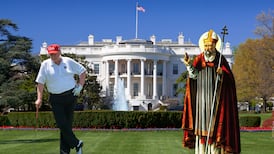WHEN PERUS Nobel laureate, Mario Vargas Llosa, described the electoral choice currently faced by his country as one between “terminal cancer and Aids” he was fairly reflecting the widespread popular alienation with politics. In the last five years, echoing that disenchantment, Peru’s president Alan Garcia has rarely seen his approval ratings exceed 30 per cent, despite a remarkably successful economy with growth at close to 7 per cent a year over ten years, the highest in Latin America. The poverty rate has fallen to 34 per cent from more than 50 per cent.
More recently Vargas Llosa has nevertheless thrown his weight in the second round of the presidential elections, on June 5th, behind one of those twin evils, former army officer Ollanta Humala, a rebranded left-wing nationalist who in 2000 organised an unsuccesful coup. Perhaps surprisingly, given that past, he is regarded as the favourite of democrats. But his previous closeness to Venezuela’s Hugo Chavez and espousal of a left-wing economic protectionism alarms the country’s growing, successful middle class despite his insistence that he now supports the market reforms of the last decade and associates with that other reformist regional left brand, the Brazilian Workers Party.
Humala came close to winning Peru’s presidency in 2006, and got nearly 32 per cent of the vote to lead the pack in the April 10th first round this time. The election saw the country’s divided three centre parties, with a combined 45 per cent, squeezed out by Humala on the left and, on the right, Keiko Fujimori. She is a 35-year-old MP whose former president father is serving a 25-year sentence for corruption and serious human rights abuses, and garnered more than 23 per cent.
Either candidate could yet win. But Fujimori, though unable to shake off her father’s reputation, is now leading the field in polls, and by as much as 20 per cent in Lima. Humala is ahead in the poorer provinces, a reflection of Garcia’s failure to use the boom to redistribute wealth. While the capital and Pacific coast have prospered, the Andean and Amazonian regions, where most of the country’s mineral wealth is concentrated have not. Economic inequality has also fuelled the centuries of racial tension afflicting Peru’s indigenous communities.
Only months ago, it seemed to be a routine election. Now it is a high drama, a contest between deeply polarising, heavily caricatured candidates; tragically, more about their supposed histories than the future of Peru.








